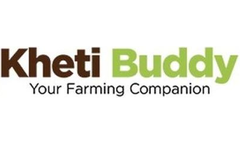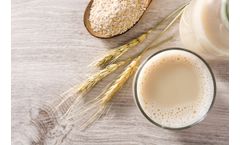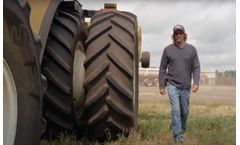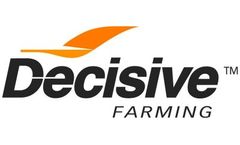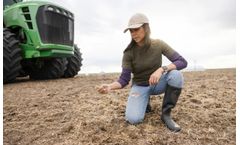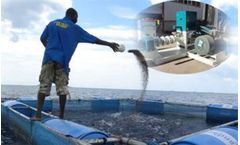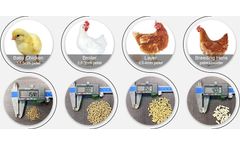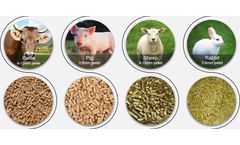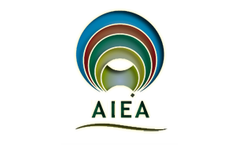Refine by
Peas Articles & Analysis
64 articles found
The following Table illustrates some feeding stuff and their mycotoxins content (Abdelhamid, 1980, 1983a - e, 1985, 1990, 2000b & 2005 and Abdelhamid et al., 1996): Feeds Mycotoxins Bone meal Vomitoxin and Zearalenone Cottonseed, Rice bran Aflatoxin-B1, Citrinin, Ochratoxin-A, Vomitoxin, and Zearalenone Grains Aflatoxin-B1 & G1, Citrinin and Ochratoxin-A Maize Aflatoxin-B1, Fumonisins, ...
For example, one field might be planted with nitrogen-fixing legumes such as peas or beans to replenish soil nutrients, while another might be sown with grains such as wheat or barley to break pest cycles and suppress weeds. ...
With Pat Kunz at the helm, alongside his family, the farm has embraced soil health as the foundation for long-term success in their wheat, canola, barley, and pea rotation, as well as their cow-calf and feedlot ...
However, pseudocereals, like amaranth or quinoa, as well as various legumes like soybeans, peas, or field beans, are also popular raw materials. In recent years, there has also been more focus on oilseeds (such as hemp, sunflower seeds) and nuts. ...
The farm comprises a cow-calf operation, feedlot and several hundred acres in a wheat, canola, barley and pea rotation. “Everybody talks about sustainability, and that’s the only word to use here,” Kunz says. ...
“On top of VR, we have incorporated additional soil health strategies,” he says. “We added peas into our rotation, which can be a challenging crop to grow in our area but help to fix nitrogen in the soil. ...
This year was a dry season in Drumheller, Alta., where his 2,500-acre farm produced about 40 per cent of its regular yield of wheat, canola, peas, lentils and barley. But for all the elements outside a farmer’s control, McDougald says such a yield was better than expected for such dry conditions. ...
Having large amounts of leftover material isn’t necessarily a positive heading into next spring. “Peas can produce a decent amount of residue, but it breaks down very quickly,” says Donald. ...
Together, they run a 3,000 acre farm in Alberta’s Peace Country, east of Manning, where they grow canola, wheat, peas, oats and some forage grasses for ...
Located in the medium brown soil zone, Barry and Spencer grow a rotation of canola, cereals, peas and canary seed. In 2021, they used TELUS Agriculture Weather Stations on their farm for the first time. ...
A system of bag tank storage is putting a large-scale pig producer a step ahead of legislation that will require slurry stores to be covered by 2027. ...
Tackling Malawi's Hidden Hunger through Selenium and Iodine biofortification to green vegetables and conservation agriculture (CA) field crops Introduction In sub-Saharan Africa, micronutrient deficiencies are common in poor and rural areas, due to over-farmed, depleted soils and restricted diets. In Malawi, three-quarters of the population are selenium-deficient, which can lead to weakened ...
The Term: Automatic and automatic-flowering plants have established In other words, Examples: tomatoes, pea plants, rose, cannabis ruderalis,… Light intensity The current daylength (length of illumination) controls, depending on the plant’s type: (SDP, LDP, NDP) which growing-phase is currently initiated As a simplified version we usually ...
When ready to make poultry feed pellet, you grind (coarsely) the corn and peas, dump in the premix, and add the small grains whole. In order to meet the requirement of the customer, our company Fusmar not only provide a full set of poultry feed pellet production line but also provide a single machine in each production process. ...
The backhoe was used only to dig the hole, drop pea gravel, backfill, and compact the soil; it wasn’t necessary for actually setting the box in place. ...
As a technical treatment, extrusion can process a variety of fish feed raw materials such as soybeans, corn, rice, peas, and high water content. According to the moisture content in the raw material treatment, the fish feed extrusion process can be divided into two kinds: dry type extrusion and wet type extrusion. ...
Seed from legumes: broad beans, field bean, and protein pea. 4. Forage: flours of permitted forage essences. 5. Dried beet pulp. ...
Seed from legumes: broad beans, field bean, and protein pea. 4. Forage: flours of permitted forage essences. 5. Dried beet pulp. ...
To remain profitable, Green City Acres is largely reliant on the production of microgreens – a small immature plant, such as sunflowers or peas which are harvested at about five centimetres. The crop can be grown in a modular system, harvested around 30 days and is worth around AU$20 a flat. ...
Egg whites are the most efficient and allergen-light source of protein when compared with rivals such as whey, soy and pea. Moreover, food manufacturers rely on eggs because they add natural protein that’s flavorless and highly soluble. ...

